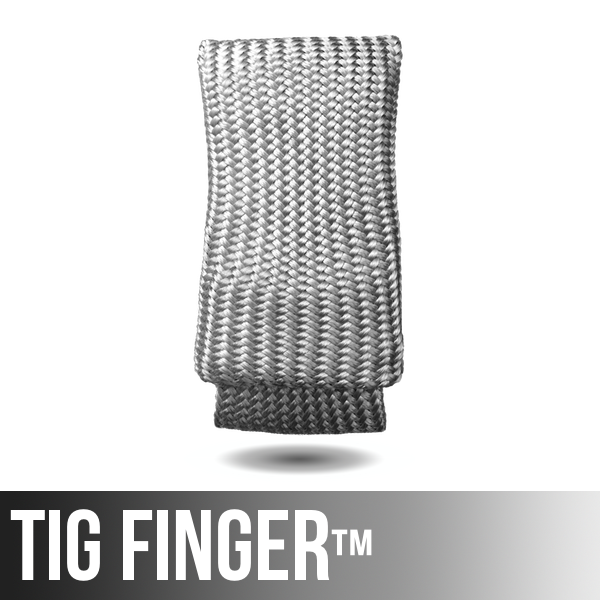
Click here to subscribe to my Video of the Week!
Tig inverters are amazing. A tig welding machine the size of a small lunchbox that can tig weld and stick weld up to 140 amps?
That’s crazy.
And Since 140 amps is plenty of power to burn a 1/8″ 7018, there are very few things that can’t be welded with one of these little tig inverters.
Today, I had a chance to weld with 2 of them.
A miller maxstar 150stl ( stl stands for stick, tig, lift arc)
and an everlast 140st (stick, tig)
Both are advertised as lift arc tig/stick welders.
“Lift Arc” means that the tungsten has to touch to start the arc. But lift arc is slightly different than scratch start.
Lift arc machines have circuitry built in that senses contact and then adds just enough spark to start an arc. That keeps the tungsten sharp and helps prevent tungsten inclusions in the weld. A good Lift arc tig unit is almost as good as high freq start… Almost.
Nothing replaces a good high freq start tig welder for those critical welds on really thin stuff. But lift arc is just fine for a whole bunch of applications.
Especially if you use a piece of copper for starts and stops.
Starting is not the biggest issue sometimes… it’s stopping.
Stopping a weld by whipping out of the puddle can really be a problem on certain metals.
But by placing a piece of copper near the end of the weld, you can exit the puddle without leaving a crater crack.
Both of these tig inverters performed today.
So here is my take on these tig welders:
The miller was a bit better on the lift arc function. It started really low and had a good arc on tig.
The everlast was a bit better as a stick welder because starts were hotter and stick rods were much easier to light.
If I were welding food grade stainless tubing like in a brewery or juice factory, I would probably opt for the miller because of the foot pedal capabilities.
But for the shop, or for a portable welder that can stick and tig, I think the Everlast would be just as good or better with a little coin to spare.
( As always, feel free to visit us at our sister site, WeldingTipsAndTricks.com. )
Click here to subscribe to my Video of the Week!








May 3, 2013 at 6:33 AM
I have been watching your videos for a while now all I can say is that you have inspired. me to purchase a tig machine.I just recently purchased a ta 186 because of some of the everlast reviews. hopefully you will do a review of this machine I would love to hear your thoughts about this machine. Thanks for some awesome videos!!!
December 29, 2012 at 1:57 PM
Jody,
Just a big THANKS for what you are doing here with your “Tips & Tricks” website.
As a ‘newbie’ to TIG welding (< 9 months experience) I eagerly wait for your video each week, between my 'trial & error" and your information; I am getting enough of an education in TIG welding to accomplish my objective of being able to weld thin stuff without blowing a bunch of holes in my projects. (I build bicycle frames that are stout enough to handle being motorized without sacrificing safety)
So, Jody…..Thanks Again for being willing to teach.
Later,
Matt
December 27, 2012 at 11:11 PM
Bought a ThermalArc 161 (stick/lift Tig) )about 10 months ago. Mostly pretty happy, but with low cost comes some drawbacks. It’s a 110/220 volt machine with severe limitations on 110 volts. Unless you have a 20 amp circuit, it’s hard to keep 1/16′ rod lit. On the other hand, 220 volts on a 20 amp circuit will run 5/32 all day. Biggest drawbacks; no “dig” control when running 6010 (70XX series rods get great penetration), and no digital readout.
In retrospect, I should have spent the extra couple hundred bucks and bought their next machine up the line. It has high freq start, digital readout, and a foot control. But I got what I could afford at the time, no regrets. Good machine for the money. Will most likely keep it for a back-up when I upgrade.
Good review of two “similar” yet very different machines. Always look forward to the weekly videos, especially like the “old school” tricks that make life so much sweeter. To those that went before me so that my way would be easier…Well Done!
December 27, 2012 at 11:01 PM
As usual, Jody does us all a great serice with his videos. I have learned an enormous amount from him. The guy is just EXCELLENT!!
I agree with Rob’s comments. A new, out of the box comparison does not give any indication of the service life of the unit, only the manufacturer’s reputation with other, older products are an indicator but not a gaurantee. We just retired a 30+ year old Miller syncowave machine from our modelshop, used no less than 10 hours a day for 6 days a week during its life. We got out money’s worth out of the machine. I’d be tempted to try an everlast machine, I found the Everlast 140tl on-line for $274 versus the miller 150 stl for about $1100. Right now my Miller 180 SD in my home shop is doing great but I will keep an eye on the durability/reliability of teh Everlast products. Jim S.
December 27, 2012 at 7:58 PM
I think what Rob says is true. I’ve had Millers at work (the XMT304) that’s taken a beating for 15 plus years on a ship subject to rain, waves, wind, salt – it keeps on ticking. I have a Dynasty 200 at home that I’ve had now 4 years with no issues. I recently bought a Hobart Handler 210MVP. The welder is ok. The spoolgun failed out of the box. If I’d of bought chinese (ThermalArc, Eastwood, etc) they’d have said box it up and we’ll send a new one. With Hobart, I waited 6 weeks in the repair shop and then had to drive 50 miles to get the brand new replacement because they couldn’t fix it anyway. So, you might get service but it may be bad service too. As for these welders, you could probably buy two everlast for the price of one miller. Like Jody says, probably for average homeshop, the everlast is a good enuf choice. Some of us (me), always prefer American made stuff, but I’m starting to wonder if I really ought to bother.
December 27, 2012 at 5:41 PM
I think several factors have to be weighed when comparing welders. Comparing ‘new’ welders misses lots of important factors, it assumes a machine will never breakdown, hold most of its original value, and stand up to daily use.
In 20 years will you be able to get parts for that cheap welder? What about if you want to trade up to a bigger machine? Will you get your money back or did you buy an orphan that is no longer supported by a manufacturer? How about circuits, will the capacitors in the cheap circuit last as long? How about the circuit board is it up to quality? Sure it may work great out of the gate but in 10 years will it sit in the corner because it’s just a shadow of the original product?